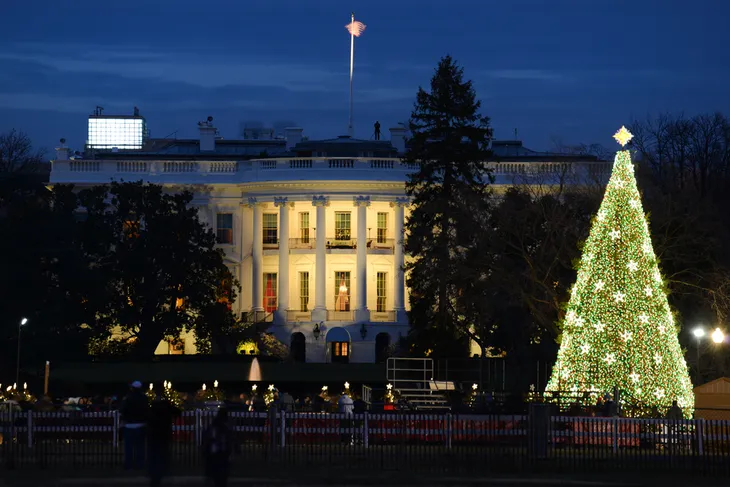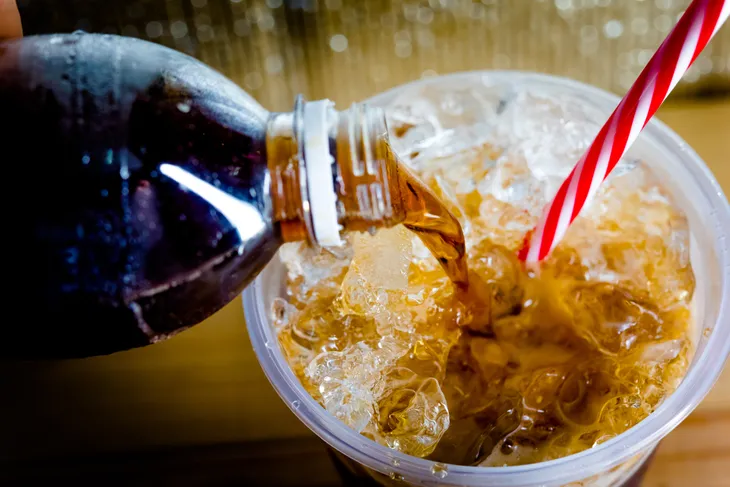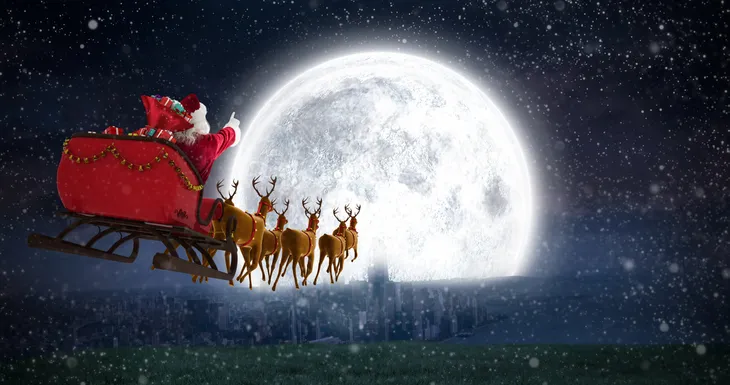Ah, the magic of yuletide. Perhaps no holiday has inspired as many songs and traditions as this winter holiday. Christmas started as a religious celebration, but over the years, people of many faiths began reveling in the spirit of the season. Many people today consider it a secular holiday. If you’ve read the Biblical story or watched many television specials, you might think you know all there is about this holiday.
However, there’s more to Christmas than a manger and Santa Claus. Read on to discover some unique facts about this seasonal celebration!
Germany Popularized the Christmas Tree
Many legends surround the tradition of decorating a Christmas tree. Most historians agree the ritual stems from pagan roots. Many nature-based religions find mystical significance in trees that stay green all winter long. People would bring these trees into their homes as symbols that the earth would once more bear fruit in the spring.
German Christians began borrowing from this tradition in the 16th century. Historians believe Martin Luther, founder of the Protestant church, popularized decorating trees with candles. When Germans immigrated to Pennsylvania, they brought the tradition stateside with them.
Dec. 25 Probably Isn’t Christ’s Birthday
The Bible doesn’t mention an exact date of birth for Jesus Christ. Therefore, while religious observances do take place on this day, there’s no evidence that you’re celebrating the day the Christian savior took human form. It’s fine to keep Christ in Christmas — but he’s probably not enjoying a heavenly birthday cake!
Many historians believe we celebrate the holiday on Dec. 25 in keeping with pagan rituals marking the winter solstice. Others believe the date corresponds with the Roman festival of Saturnalia. When Christianity became the law of the land in the ancient empire, the aristocracy had to appease the people by replacing their expected winter holiday.
Authorities Once Banned Cooking on Christmas
Can you imagine Christmas without a feast? If you lived in Puritanical New England, chowing down with your family could get you in trouble with the law. In 1659, the Puritan government of the Massachusetts Bay Colony banned the celebration of the holiday. If they caught you reveling, you’d have to pay the county a fine of five shillings.
Why? The leaders considered it heretical to perform any labor on a holy day. They believed they needed to reserve these days for worship and prayer — not presents and feasts.
President Harrison Had the First White House Christmas Tree
Nowadays, people look forward to seeing the annual White House Christmas decorations, but not every president had a tree. Even though John and Abigail Adams hosted the first presidential Christmas party, President Benjamin Harrison erected the first tree in the Second Floor Oval Room. He decorated it with candles and toys for his grandchildren.
This year’s White House Christmas theme is “The Spirit of America.” The 18′ White House tree comes alive with paper flowers symbolic of each state and territory. The decor represents all the things that make this nation great.
Teddy Roosevelt Objected to Christmas Trees
While Harrison had the first tree, not every subsequent president got into the decorative spirit. Theodore Roosevelt, for example, refused to put up a Christmas tree because he felt doing so violated his commitment to conservation. As the creator of the U.S. Forest Service, he believed trees belong in the woods.
His son didn’t feel the same — rumor has it that he smuggled a small tree into the house and put it in an upstairs closet. You have to wonder what Roosevelt would have thought of today’s artificial trees. Perhaps he would have embraced the trend — or maybe he’d object to the use of plastic.
Coca-Cola Helped Put the Red in Christmas
Nowadays, when you think of Coca-Cola’s seasonal advertising, you typically think of polar bears. However, these adorable bruins didn’t always grace the face of Coke’s ads in the wintertime. Back in earlier times, their advertising depictions of St. Nick as a jolly fellow dressed in red helped cement this as one of the colors of the season.
The Coke marketers weren’t the first artists to depict Santa all in red. Many artists throughout history have drawn him draped in scarlet robes. However, the ubiquitousness of the ads helped make crimson one of the two key Christmas colors popular today. Green, of course, symbolizes the rebirth of life after winter.
The Best Gifts Don’t Have to Come from a Store
Retail giants would like you to believe the hottest item on everyone’s wish list comes from a store. However, the popularity of online specialty shops like Etsy belies this notion. Over half of Americans say they enjoy giving and receiving homemade gifts around the holidays.
Why? The time and effort you put into creating such treats show how much you care. Anyone with a credit card can drop a bundle on store-bought trinkets. However, a homemade macrame wall hanging or a knitted sweater shows you thought about the recipient while you crafted it.
…But Holiday Shopping Still Makes up a Sizeable Portion of Retail Sales
As much as people appreciate homemade gifts, those who earn their living in sales count on the holiday season to end up in the black. Experts expect the majority of Americans to drop an average of $920 on the winter holiday this year, up from $885 in 2018. The phrase “Black Friday” stems from the day of the year when retailers finally stop operating in the red and break even.
The hottest gift seems to vary from year to year. This year, as more people embrace healthier eating despite hectic lifestyles, Instant Pots top many wish lists. Past holiday favorites of yesteryear include Cabbage Patch Kids and video game consoles.
The U.S. Postal Service Answers Letters to Santa
Did you know you could put a smile on a faraway child’s face this holiday season? The U.S. Postal Service scans the Santa letters it receives and uploads them to its site for volunteers to answer. You can register on the site and choose a letter. Then, you can send a toy or clothing to the recipient.
This year, the postal service ran into a splendid problem — it ran out of letters to Santa to answer! Hopefully, more people will continue this tradition, so more children can enjoy waking up to their wish coming true under the tree.
Santa’s Sleigh Is Faster Than a Jet
How fast would Santa have to fly to make it around the world in one night? You’d better hope Rudolph and his teammates stocked up on their coffee. They’d have to fly 6 million miles per hour to make the trek and deliver gifts to everyone.
It’s challenging to correlate this figure exactly to a jet — the wind helps tremendously in flight. However, most commercial jets reach ground speeds of only 300 to 600 nautical miles per hour. Hopefully, Santa teamed up with Elon Musk or somebody to get the extra horse, er, reindeer power he needs!
St. Nicholas Was an Early Women’s Rights Supporter
In the days when St. Nicholas lived, a woman’s family paid a dowry when she got married. This tradition began as a way to compensate the husband for taking care of the wife’s needs. However, if a family lacked the money to pay a dowry, they often sold their daughters into servitude.
As one story goes, St. Nicholas couldn’t bear the thought of three impoverished daughters spending their lives in slavery. Three times, he visited the family home during the night and left bags of coins so the daughters could marry the men they chose. On the third occasion, the women’s father caught St. Nicholas and thanked him for his generosity.
Christmas Stockings Started with a Happy Accident
Doing laundry used to take considerably longer in the days before someone invented dryers. People used to hang their clothing by the fire to let the heat from the flames dry them more quickly. This process also kept their underwear from freezing in the outdoor air.
As legend has it, St. Nicholas was paying a visit by coming down the chimney. The daughters of the family he called upon had hung their stockings by the fire to dry. He dropped the gifts, and they fell within. Thus, the legend of the Christmas stocking was born.
Saturnalia Made Peasants into Masters
Now, here’s an idea many workers today could support! Ancient Romans celebrated Saturnalia, a winter holiday to honor the god of agriculture. During this time, the standard social order of the country turned topsy-turvy. Peasants took command of the city and closed down all businesses so everyone could participate in the merry-making.
The ancient Roman celebration hardly resembled a solemn religious ritual. However, the revelers did depict the birthday of Mithra, a Persian god known as Sol Invictus, or “the Unconquerable Sun,” on Dec. 25. Coincidence?
A Copywriter Invented Rudolph the Red-Nosed Reindeer
People love to criticize the folks who work in advertising and marketing — but without these disciplines, you’d miss out on many symbols of the season. Robert L. May, an advertising copywriter for Montgomery Ward, created the iconic red-nosed reindeer, Rudolph. Were it not for this man’s creativity, generations of children would never have met Yukon Cornelius and the rest of the crew.
Every year, the store would give out free coloring books to children who visited Father Christmas. Rudolph’s story saw 2.4 million copies during its first year of publication. The song followed in 1949 and is one of the top-selling hits of all time.
The Majority of Americans Celebrate the Holiday
While not all Americans celebrate the religious significance of this holiday, the majority do take part in the festivities. According to a recent survey, 89-percent of Americans celebrate Christmas, followed by 5-percent who honor Hanukkah and 3-percent who observe Kwanzaa.
The majority also reported that they say “Merry Christmas” to greet others during this time of the year. The holiday is winning the presumed war against it. Regardless of what you say when you greet others, though, the season is the perfect reminder to practice kindness toward your fellow humans.
Now that you know the secret history of the holiday, you can impress your friends with your trivia knowledge. You’ll be a hit at the next holiday bash when you share these exciting tidbits!


















